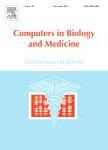版权所有:内蒙古大学图书馆 技术提供:维普资讯• 智图
内蒙古自治区呼和浩特市赛罕区大学西街235号 邮编: 010021

作者机构:Univ Louisville Dept Bioengn Louisville KY USA Univ Louisville James Graham Brown Canc Ctr Louisville KY USA Univ Louisville Ctr Predict Med Louisville KY USA
出 版 物:《COMPUTERS IN BIOLOGY AND MEDICINE》 (生物学与医学中的计算机)
年 卷 期:2021年第134卷
页 面:104507-104507页
核心收录:
学科分类:0831[工学-生物医学工程(可授工学、理学、医学学位)] 0710[理学-生物学] 07[理学] 09[农学] 0812[工学-计算机科学与技术(可授工学、理学学位)]
基 金:National Institutes of Health/National Cancer Institute [R15CA203605] Department of Defense/ U.S. Army Medical Research [W81XWH2110012] National Science Foundation Direct For Computer & Info Scie & Enginr Funding Source: National Science Foundation Office of Advanced Cyberinfrastructure (OAC) Funding Source: National Science Foundation
主 题:3D tumor model Cancer simulation Distributed computing Parallelized computing Continuum models Mixture models CUDA MPI openMP
摘 要:Simulation of cm-scale tumor growth has generally been constrained by the computational cost to numerically solve the associated equations, with models limited to representing mm-scale or smaller tumors. While the work has proven useful to the study of small tumors and micro-metastases, a biologically-relevant simulation of cmscale masses as would be typically detected and treated in patients has remained an elusive goal. This study presents a distributed computing (parallelized) implementation of a mixture model of tumor growth to simulate 3D cm-scale vascularized tissue at sub-mm resolution. The numerical solving scheme utilizes a two-stage parallelization framework. The solution is written for GPU computation using the CUDA framework, which handles all Multigrid-related computations. Message Passing Interface (MPI) handles distribution of information across multiple processes, freeing the program from RAM and the processing limitations found on single systems. On each system, Nvidia s CUDA library allows for fast processing of model data using GPU-bound computing on fewer systems. The results show that a combined MPI-CUDA implementation enables the continuum modeling of cm-scale tumors at reasonable computational cost. Further work to calibrate model parameters to particular tumor conditions could enable simulation of patient-specific tumors for clinical application.